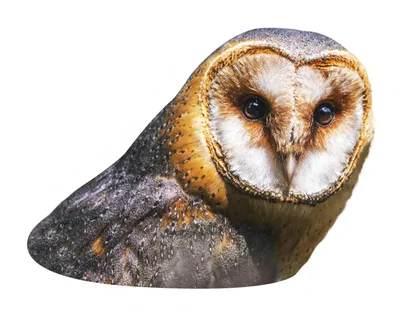want some cookies?
We use cookies to make your browsing experience amazing.

Want to create your own learner persona? But don’t know where to start? Well this blog is here to be your fairy godmother, complete with sparkles ✨. Because in this blog, I'm going to walk you through the entire learner persona development process, complete with examples AND our template.
THINK YOU KNOW IT ALL ALREADY? Alright, well you can jump to the good stuff and download our persona template here. But if you’re sensible, you’ll read on 😉
STEP 1: RESEARCH
Our template can’t help you here. You’ve gotta get into the nitty gritty and have some one-on-one conversations with your target audience and stakeholders. As a rough ballpark, try to speak to around 5 to 10% of your target audience to create the first draft of your learner personas. (Of course, if you have hundreds of thousands of employees in your org, this is going to be nigh on impossible – so just make sure you have a generous percentage share!)
Make sure the people you talk to are from:
Diverse roles and seniority – there’s no point only talking to senior leaders. Nor is there any point only talking to new hires. Get a cross section of your entire organisation.
Mixed demographic data: a nice blend of all genders, ages, locations and the rest of that good stuff!
A variety of walks of life! If you really want to get to know your audience, you have to dig deeper and get to know them as human beings. So make sure you’re being diverse with life experiences too.
Once you’ve spoken to your target audience, match the information they’ve given you with the data that already exists in your organisation. For example, tenure at your company, age, location, maybe even pay banding if applicable!
STEP 2: FIND RED THREADS
Throughout your research process, you’ll likely start identifying some red threads. For example, you might have a lot of people who say they want to grow their career at your organisation, or you might have people that have let you in on their feelings of imposter syndrome. Identify patterns and trends in your data and start to put your data into persona buckets. From these buckets, identify key factors that unify these people.
FOR EXAMPLE...
I recently created learner personas for one of our clients. After spending over 15 hours speaking to groups of employees, I noticed a clear red thread. One group of people kept telling me things like:
- They are proud to be in the role they're in, but imposter syndrome is huge.
- They want to be a role model to their colleagues and peers.
- They are extremely self reflective, they don't want to be seen as incapable of their job.
- They're very private online - they think a lot about their personal brand and how they're perceived.
- They'd rather observe and model leadership, than be told what to do. If they're being told what to do, they feel like they've done something wrong.
The red thread? Hesitancy. They want to do well, they want to be a role model, they want to be the gold star employee... but they're a little nervous about it.
This red thread was the birth of our first persona: Hesitant Hugh.
STEP 3: ADD DATA & ASSUMPTIONS
By now you should have a few red threads from your research phase. You might prefer to think of these as 'buckets' that your target audience will fall into. It's important to remember here: It is highly unlikely that every employee will fit perfectly into one particular bucket.
Now you have your red threads, you want to match these up to some other data you may have about your target audience. This may be further qualitative data from your research phase, it maybe be existing organisational data (such as tenure in role, age and so on...), or it may be your assumptions. Yep. You're allowed to make assumptions here, but make sure you're not letting any of your personal biases seep through!
TO CONTINUE OUR EXAMPLE...
By piecing together more of my qualitative research with organisational data, I quickly realised that our persona, Hesitant Hugh, also:
- Prioritised his family and friends – and would likely have a young family!
- Had only been in his role for a short amount of time, maybe a year or two.
- Didn't feel as though he had a good example of what a great leader was.
- Felt overwhelmed with the amount of work he needed to do.
We're starting to get quite a clear picture of Hugh now, aren't we?
STEP 4: WRITE A PERSONAL PROFILE & ADD KEY STATS
Now we're getting quite a clear picture of our persona, it's time to start building out our document. We want to start with painting an overall picture of this persona, who are they really? What motivates them? How do they like spending their free time? And what are their key stats*? In this section we want to write a short synopsis of our persona, 50 - 70 words MAX!
LET'S WRITE A PROFILE FOR HUGH...
Our personal profile for Hugh might be something along the lines of...
Hugh is a very successful career-man, who has recently been promoted into a management role. Although he has been incredibly successful in his career, he is nervous about management, and is looking for help and guidance.
Outside of work Hugh is a family man, and enjoys spending time with his young children, wife and extended family. He works hard in life so he can provide the best life for them.
*Key stats are things like age, tenure at company, management responsibility and so on... some people actually find this easier to do at the end. So don't get too hung up on it at this stage!
STEP 5: ADD KEY TRAITS & INSPIRATIONS
Truthfully, this section is completely optional. But I personally find it super helpful! By listing out the key traits and/or things that inspire our persona, it will help us look at the persona as a real person. This helps further down the line when you are creating marketing tactics, as it gives you a real flavour about what might work for them.
For example, if you know that your persona is incredibly short on time and loves watching TikToks about leadership – maybe you'll create short, snappy videos to grab their attention? Or, if your persona is inspired by leadership in your organisation... then you'd definitely use leadership as influencers when marketing to this persona!
STEP 6: MOTIVATORS & GOALS
Okay, now we're getting into the good stuff. From all of the data you've collected about your persona so far, you need to identify goals and motivators for this person. And the truth is, these will not be learning related.
All too often, I've seen learner personas with goals or motivations along the lines of...
❌ To learn something quickly and easily around my day job
❌ To get a certificate at the end of training
❌ To access the learning platform once a week.
These are not going to be your audience's motivators or goals!
Even though we're thinking about learning a lot. Our target audience aren't. These goals and motivators should be related to their jobs and their lives. And okay, a very, very, very, very, very slim amount of people might be thinking about learning. But don't flatter yourself by thinking they're the majority.
FOR EXAMPLE, HUGH'S MOTIVATORS AND GOALS MIGHT BE...
- Hugh is motivated by recognition from leaders, peers and his team on when he has done a good job. (Because he has imposter syndrome & needs external validation – we learnt this in our research phase!)
- He wants to push his team forward so they are recognised for the hard work they do and the contribution they make to the organisational goals. (Because he wants to be a role model & be the leader he never had!)
- He is also driven by bonuses, rewards and benefits. Hugh needs tangible ways to provide for his family right now. (Remember, he has a young family to cater for!)
STEP 7: EMOTIONAL DRIVERS
Now we need to think about what our persona really wants, needs and their pain points. And again, this will not be about learning. Nobody wakes up in the morning thinking "I really want a quick and easy way to access learning content". Nor do they think "I really need an elearning course".
So instead of learning wants and needs – we must think about our personas human wants and needs. What will make their day to day live better? What makes them roll their eyes on a daily basis? What struggles are they facing?
This might feel a little too detached from learning. But trust us, we've done this a lot and it works! By understanding our people in this depth – we'll be able to tap into their emotions and get them involved with learning. And that's what we're striving for, right?
SO, HUGH MIGHT WANT AND NEED...
- Hugh needs clear signposting on the processes he should be following when managing his team. The processes can be complicated and he's scared he'll miss something. (Because he's a new manager, and extremely hesitant in all he does!)
- Hugh wants efficient communications, so that he is 'in the know', without it taking up too much of his time. (Because he's feeling quite overwhelmed right now!)
- He thinks he isn't capable of his new role and is scared of being discovered as a fraud. (Because that's what imposter syndrome is, after all!)
STEP 8: TEST, TEST AND TEST SOME MORE
We can't talk about testing enough when it comes to personas. Over time, you will learn more and more about your target audience. So your personas will change. And that is a-ok! In fact, I'd be more upset if your personas never changed.
Make sure that you come back to your personas and check they're working for you! Collect more data over time. Ask more questions. Then iterate, and you guessed it... test again.
A WORD OF WARNING
Before I set you free with our persona template, I want to give you some final top tips:
- YOUR PERSONAS SHOULD NOT BE LEARNING FOCUSED. Please do not read this whole blog and then add "learning styles", "preferred learning method" or "attitude towards learning" in your personas. Seriously, it'll make me cry. If you want to get REAL impact with your personas & marketing for learning® efforts. You need to think about your target audience as HUMANS, not learners.
- FIVE IS THE LIMIT. Under no circumstances should you have more than 5 personas. No matter how big your target audience is!
Don't believe you can do it? Listen to this podcast with Elvira from Expedia Group, she did it – and you can too! - ADD IN THE DETAIL. Personas that are light on detail make me sad. It's the detail in our personas that help us imagine them as a real human being. And in my opinion, there's a strong correlation between personas that are light on detail & poor marketing. Add in the detail, and write personas that anyone can pick up and understand.
WANNA SEE IT IN ACTION?
Well Han's here to save the day... she vlogged the whole process of creating personas, the last time she created them for one of our lovely clients. So grab a brew, and see a pro in action ☕️
FREE PERSONA TEMPLATE
Ok, now you're ready. Here's our learner persona template, that you can use to create some kick-ass personas. Armed with this blog and the template, I have no doubt that you'll create personas to be proud of (and that actually work!) But if you need a lil' more guidance, check out these podcasts:
- LEARNER PERSONAS 101
- MINI MASTERCLASS SESSION - LEARNER PERSONAS
- THE IMPORTANCE OF PERSONAS AT EXPEDIA GROUP
- WHY L&D NEED PERSONAS
Alright, now you can download your persona template 😉👇
(Oh, and if you're a Canva user... here's our personas template in Canva format, click on that & it'll go straight into your Canva account #YoureWelcome)
FREE PERSONAS TEMPLATE











